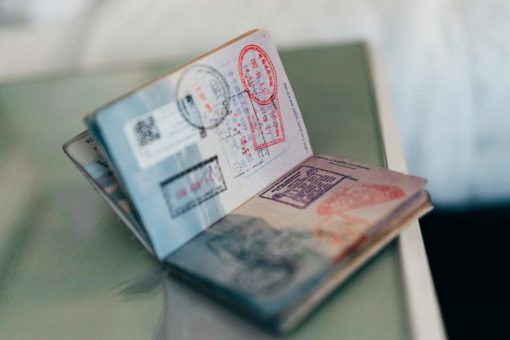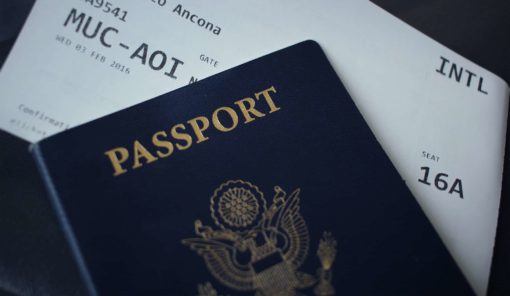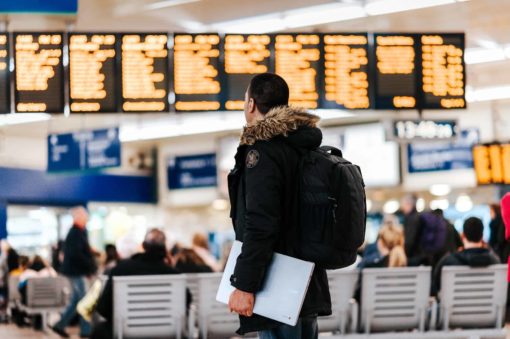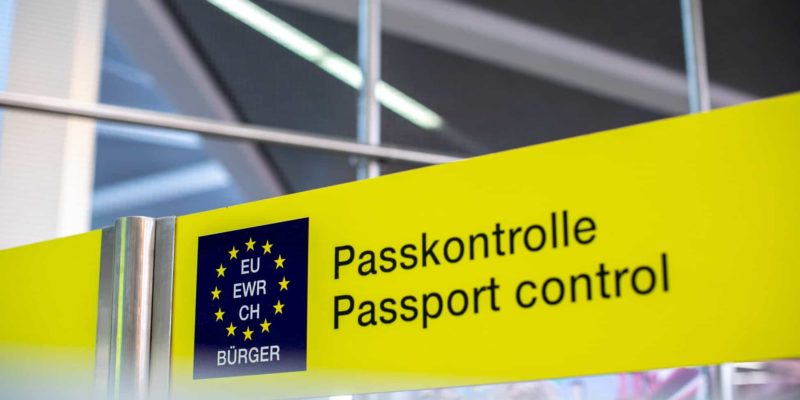Are you planning on visiting the Schengen Area, no matter your travel purpose?
Then you may be eligible for a Schengen Visa.
Therefore, before reading this guide (or other posts and guides available on Visas Association’s website), you must first figure out whether you actually need to get a Visa to travel to the Schengen Area.
Currently, citizens of several countries are allowed to cross any Member State’s borders without holding a Visa on their passports.
However, if you need to request a Schengen Visa, we suggest you read this post from start to finish to get an overall idea of the application process.
Table of contents:
- How to know if you need a Schengen Visa?
- What is the Schengen Visa application process?
- 7 steps to follow when applying for a Schengen Visa
1. How To Know If You Need A Schengen Visa?

Here is what you should do to figure out whether you need to apply for a Schengen Visa to travel to Europe or not.
- Determine if the country where you will be travelling to requires a Schengen Visa
There are 26 countries that are part of the Schengen Area and all of them require a Visa, these are:
| Austria | Finland | Iceland | Luxembourg | Portugal | Switzerland |
| Belgium | France | Italy | Malta | Slovakia | |
| Czech Republic | Germany | Latvia | Netherlands | Slovenia | |
| Denmark | Greece | Liechtenstein | Norway | Spain | |
| Estonia | Hungary | Lithuania | Poland | Sweden |
There are many non-Schengen countries that you are allowed to enter with a double-entry or multiple-entry Visa, these are:
| Albania | Bulgaria | Cyprus | Kosovo | North Macedonia | Serbia |
| Antigua and Barbuda | Colombia | Georgia | Mexico | Romania | Turkey |
| Bosnia and Herzegovina | Croatia | Gibraltar | Montenegro | Sao Tome and Principe |
Please note that the non-Schengen countries you are allowed to enter with a Schengen Visa may have their own special requirements.
Are you planning on travelling to one of the non-Schengen countries listed above? Then we suggest that you contact the Embassy/Consulate of your destination country located in your country of residence.
- Determine if you need a Visa to travel to the Schengen Area
If the country where you will be travelling to requires a Schengen Visa, the next step is to determine whether you are eligible for a Schengen Visa or not.
If you are a citizen of one of the following countries, then you MUST apply for a Schengen Visa:
| Afghanistan | Gabon | Oman |
| Algeria | Gambia | Pakistan |
| Angola | Ghana | Papua New Guinea |
| Armenia | Guinea | Palestinian Authority |
| Azerbaijan | Guinea-Bissau | Philippines |
| Bahrain | Guyana | Qatar |
| Bangladesh | Haiti | Russia |
| Belarus | India | Rwanda |
| Belize | Indonesia | Sao Tome and Principe |
| Benin | Iran | Saudi Arabia |
| Bhutan | Iraq | Senegal |
| Bolivia | Jamaica | Sierra Leone |
| Botswana | Jordan | Somalia |
| Burkina Faso | Kazachstan | South Africa |
| Burma/Myanmar | Kenya | South Sudan |
| Burundi | Kosovo | Sri Lanka |
| Cambodia | Kuwait | Sudan |
| Cameroon | Kyrgyzstan | Suriname |
| Cape Verde | Laos | Swaziland |
| Central African Republic | Lebanon | Syria |
| Chad | Lesotho | Tajikistan |
| China | Liberia | Tanzania |
| Comoros | Libia | Thailand |
| Congo | Madagascar | Timor-Leste (East Timor) |
| Côte d’Ivoire (Ivory Coast) | Malawi | Togo |
| Cuba | Maldives | Tonga |
| Democratic Republic Of Congo | Mali | Tunisia |
| Djibouti | Mauritania | Turkey |
| Dominican Republic | Mongolia | Turkmenistan |
| Ecuador | Morocco | Uganda |
| Egypt | Mozambique | Uzbekistan |
| Equatorial Guinea | Namibia | Vietnam |
| Eritrea | Nepal | Yemen |
| Ethiopia | Niger | Zambia |
| Fiji | Nigeria | Zimbabwe |
| North Korea | Northern Marianas |
If you are a citizen of one of the following countries, you DO NOT NEED to apply for a Schengen Visa:
| Albania *only if you hold a biometric passport | Israel | Saint Vincent |
| Andorra | Japan | Samoa |
| Antigua and Barbuda | Kiribati | Serbia*only if you hold a biometric passport |
| Argentina | Macao S.A.R*only if you hold a “Região Administrativa Especial de Macau” passport | Seychelles |
| Australia | Malaysia | Singapore |
| Bahamas | Marshall Islands | Solomon Islands |
| Barbados | Mauritius | South Korea |
| Bosnia and Herzegovina *only if you hold a biometric passport | Mexico | Taiwan *only if your passport contains an identity card number |
| Brazil | Micronesia | Timor Leste |
| Brunei Darussalam | Moldova*only if you hold a biometric passport | Tonga |
| Canada | Monaco | Trinidad and Tobago |
| Chile | Montenegro*only if you hold a biometric passport | Tuvalu |
| Colombia | Nauru | Ukraine |
| Costa Rica | New Zealand | United Arab Emirates |
| Dominica | Nicaragua | United Kingdom* |
| El Salvador | North Macedonia*only if you hold a biometric passport | United States of America |
| Giorgia | Palau | Uruguay |
| Grenada | Panama | Vanuatu |
| Guatemala | Paraguay | Venezuela |
| Holy See (Vatican City State) | Peru | |
| Honduras | Saint Kitts and Nevis | |
| Hong Kong S.A.R*only if you hold a “Hong Kong Special Administrative Region” valid passport | Saint Lucia |
*Important – The visa-free access to the Schengen States also applies to British citizens who are not nationals of the United Kingdom: British Nationals (Overseas), British Overseas Territories Citizens, British Overseas Citizens, British Protected Persons, and British Subjects.
2. What Is The Schengen Visa Application Process?

Do you need a Schengen Visa to travel to Europe?
Then it’s time for you to learn more about the Schengen Visa application.
Applying for a Visa means submitting a set of required documents to a Schengen Embassy and holding an interview with the Visa officers.
At the end of your Visa application process, you can be either approved or refused.
If your application gets approved, the Embassy will issue a Visa sticker for you and apply it on your travel document.
If your application gets rejected, you can either appeal your Visa rejection or submit a new application.
3. 7 Steps To Follow When Applying For A Schengen Visa

Once you ascertain that you need a Visa to travel to the Schengen Zone, you should prepare your application following the steps below:
- Determine what Schengen Visa type you need
Every Schengen Embassy and Consulate issue various Visa types according to the travel purpose and the length of stay.
The most common Visa type is “type C Uniform Schengen Visa (USV)” for short stays in Europe.
If you plan on travelling for tourism purposes, you must apply for this type of Visa.
Type C Uniform Schengen Visas can also be single-entry, double-entry, and multiple-entry visas.
For further information about Schengen Visa types, please check out this link.
- Find out where you need to apply
The Embassy or Consulate where you need to submit your application depends on your Schengen destination country (the country you will enter first) or the Schengen country you will spend most days.
In some cases, Embassies and Consulates have outsourced the Visa submission to the Embassy or Consulate of another Schengen state or a Schengen Visa outsourcing company.
Please check out this link to learn where you need to submit your application.
- Find out when you need to apply
Embassies and Consulates can take up to 15 days to process your application.
However, in some cases, the processing time can be longer.
The New Visa Code implemented on February 2nd, 2020, allows you to submit your Schengen Visa application :
- Not more than six months before the date you plan to travel to the Schengen Area (the earliest date).
- Not less than 15 working days before the date you plan to travel to the Schengen Area (the latest date).
Our recommendation is to submit your application at least three weeks before the date when you plan to travel to the Schengen Area.
- Book an appointment
During your Visa appointment, you will have to hold an interview with the Embassy officers, submit your documents, and provide your biometric data. In addition, you will also have to pay the Schengen Visa fee.
You should book an appointment before you start collecting your documents.
Many Embassies and Consulates cannot book the appointment for you within a short period due to the high Visa demand.
As a general rule, you can book the appointment yourself or book it through a Visa outsourcing company that serves governments and diplomatic missions.
For further details about your Embassy appointment, please check out this link.
- Collect the required documents
The documents you will be submitting are crucial for your application success. They can determine your Schengen Visa approval or refusal.
For most applicants, collecting the required documents is the most confusing part of the Visa application process.
“What documents should I submit?”, “When should I start collecting them?” and “Where should I get them?” are the most frequent questions that Schengen Visa applicants are asking.
To have a clear understanding of the documents you must submit, we suggest you read the following post: Schengen Visa Application – Conditional Requirements.
You should create a list of the documents you must submit to the Embassy (e.g., Visa application form, proof of subsistence means and accommodation, etc.)
Then, it would help if you read our detailed guides concerning each of these requirements.
You can either access the free versions of our guides or contact us for further details about the complete versions we provide to our community members.
- Hold the Schengen Visa interview
On the day of your interview, you will have to answer a set of questions, submit your application, pay the visa fee, and provide your biometric data.
You can read more about the most common Schengen Visa interview questions here.
You can also check out this link to determine how much you need to pay for your Schengen Visa and what payment methods are available.
Providing your biometric data means registering your fingerprints. The Visa officers will store your fingerprints in a Visa Information System (VIS), a central I.T. system available at Schengen Countries’ immigration borders.
Outside of your fingerprints, the system will register your personal information. The VIS system will also store relevant information about the person or institution who has invited you to the Schengen Zone (if any).
Only children under the age of 12 are exempted from providing biometric identifiers.
- Wait for an answer from the Embassy
After holding your Visa interview, you must wait up to 15 days to get an answer concerning your application. However, please note that sometimes the process can take longer.
Your Schengen Visa can be either approved or denied.
- If your Schengen Visa gets approved – Read the instructions in the letter you received from the Embassy. You will have to return to the Embassy on a specific date to get your Visa sticker attached to your passport.
Please note that you must carefully read your Visa sticker and make sure no error occurred while printing it.
- If your Schengen Visa gets denied – Read the reasons why they rejected your Visa and try to fulfil that specific requirement next time you apply for a Visa. There is no particular moment when you are allowed to apply for a Schengen Visa after rejection.
Alternatively, you can appeal your Schengen Visa denial, according to article 32 (3) of the Visa Code.

Applying for a Schengen Visa may seem daunting as each Member State has specific requirements.
We are aware that preparing a Schengen Visa application for the first time can be intimidating, mainly because there are no clear guidelines concerning this process on Embassies’ official websites.
If you need any help and want to prepare your application without hassle or know what documents are required for your Visa application, do not hesitate to contact us.
Our team would be more than happy to provide you with a free consultation or any other information you may need to take the necessary steps for a successful application.
